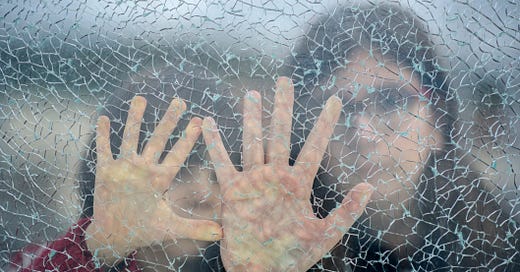All Domestically Abusive Men's Coercive Control Tactics Harm Children Too
Fathers who coercively control a child's mother are destructive parents
Dr Emma Katz is widely regarded as one the world’s foremost academic experts in her area of research — how coercive control impacts on children and young people.
Emma specializes in the harms caused by father-perpetrated coercive control, as well as children’s and mothers’ resistance and recovery. Read more in her book Coercive Control in Mothers’ and Children’s Lives, published by Oxford University Press.
Children are often overlooked as victims and survivors of coercive control
Coercive control is at the heart of domestic abuse — it includes all the power and control tactics that perpetrators use to entrap, manipulate, harm and exploit their targets. But coercive control doesn’t just affect the adult targeted by the perpetrator. It also affects anyone else in the household, including children.
In fact, the law in England and Wales recognizes this. Children who are affected by domestic abuse are officially domestic abuse victims, according to the Domestic Abuse Act 2021, which describes children as victims not only in terms of domestic abuse that they “see” or “hear” but also in how they “experience the effects” of domestic abuse:
“A child who sees or hears, or experiences the effects of, domestic abuse and is related to or under parental responsibility of the person being abused or the perpetrator is also to be regarded as a victim of domestic abuse.”
An example of a child experiencing the effects of domestic abuse would be where a perpetrating father is financially abusing a victim-survivor mother and this leaves her without enough money to spend on nutritious food for the family.
Are the wider harms that perpetrators cause to children’s daily lives genuinely taken into account?
Of course a law is only useful if systems and professionals are willing to follow that law — so, are the wider harms that perpetrators cause to children’s daily lives genuinely taken into account?
The answer is: often not.
Most people simply cannot imagine how much children’s daily lives could be impacted by coercive control, and societies don’t tend to take this into account when discussing domestic violence and abuse.
Indeed, in recent years, it has been my research that has been at the forefront of bringing this knowledge into the world. I wrote the very first academic book about the impacts on coercive control on children.
In this article, I’m also going to share this knowledge with you. Below, I set out how every tactic of coercive control that a perpetrator uses will inevitably harm the children in the family.
I hope this article will help people to challenge statements such as:
“He can still be a good father to the kids even though he was a bad husband to you.”
No, if he’s a coercive control perpetrator then no, he can’t be a good father.
I say “he” and I focus on male perpetrators in this article because a large majority of coercive control perpetrators are men (e.g. 97% of those convicted for controlling and coercive behavior are men). There are of course exceptions: Women can also coercively control intimate partners, though this is statistically a great deal rarer. All victims-survivors deserve support.
So let’s go through the primary coercive control tactics one by one and see how they can negatively impact children.
A reminder
At this point, I just want to gently remind everyone that perpetrators are responsible for their choices to abuse. Abuse – and the impacts of abuse – is never the victim’s-survivor’s fault.
Perpetrators make sure they have lots of power and control over the situation, and perpetrators push victims-survivors into impossible situations where they have little power and all the choices open to them are exceptionally tough.
As a result, victims-survivors shouldn’t have to bear any guilt for how the children were impacted — the fault lies entirely with the perpetrator.
Emotional and psychological abuse
There are so many ways children are affected when their father* uses emotional and psychological abuse against their mother as part of coercive control. (*I’ll use “father” here to keep my writing simple, but the perpetrator might also be a step-father or a mother’s boyfriend.)
During the relationship or during post-separation contact with children, a father may:
mock, humiliate and put the mother down, encouraging the children to think badly of their mother;
suggest to the children that their mother is silly, stupid and incapable;
use gendered slurs to tell the children their mother is a “whore” a “slut” or a mean “bitch”;
suggest to the children that their mother doesn’t love them as much as he does, or doesn’t love them at all.
All this can occur directly by the father saying things like “mom told me she wishes you were never born”, or more subtly, for example by him rolling his eyes in front of the children while their mother speaks, or frequently making jokes about the mother to the children.




